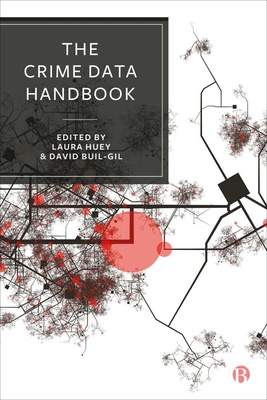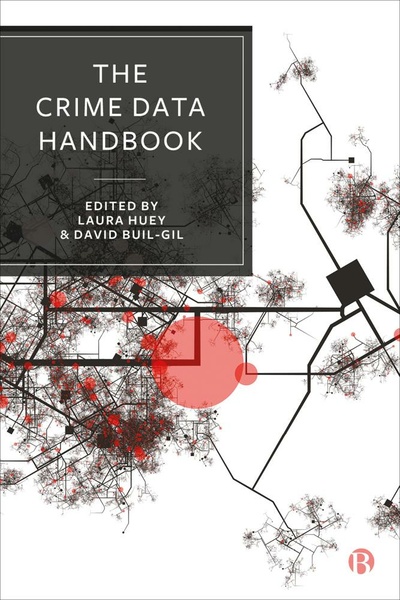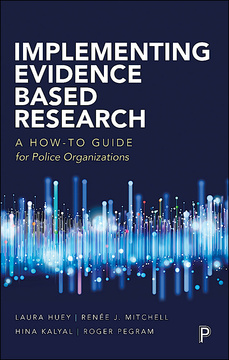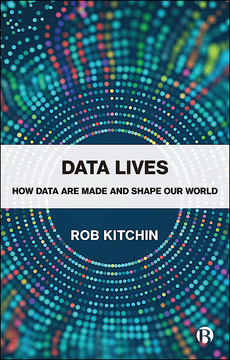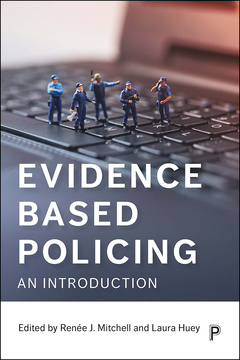The Crime Data Handbook
Edited by Laura Huey and David Buil-Gil
Published
Apr 30, 2024Page count
352 pagesISBN
978-1529232042Dimensions
234 x 156 mmImprint
Bristol University PressPublished
Apr 30, 2024Page count
352 pagesISBN
978-1529232035Dimensions
234 x 156 mmImprint
Bristol University PressPublished
Apr 30, 2024Page count
352 pagesISBN
978-1529232059Dimensions
234 x 156 mmImprint
Bristol University PressPublished
Apr 30, 2024Page count
352 pagesISBN
978-1529232059Dimensions
234 x 156 mmImprint
Bristol University PressCrime research has grown substantially over the past decade, with a rise in evidence-informed approaches to criminal justice, statistics-driven decision-making and predictive analytics. The fuel that has driven this growth is data – and one of its most pressing challenges is the lack of research on the use and interpretation of data sources.
This accessible, engaging book closes that gap for researchers, practitioners and students. International researchers and crime analysts discuss the strengths, perils and opportunities of the data sources and tools now available and their best use in informing sound public policy and criminal justice practice.
“Statistics on crime promise to open a window on the victims, situations and consequences of one of the pressing problems of our time. But rather than educating and advising, crime data are often misunderstood and misapplied. This timely volume surveys the data terrain and provides clear guidance for properly using a variety of crime and justice measures.” Wesley G. Skogan, Northwestern University
“This text brings together relevant topical areas with contributions that should be foundational readings for both academics and practitioners.” Grant Drawve, Vice President of Research & Innovation, CAP Index
Laura Huey is Professor of Sociology at the University of Western Ontario.
David Buil-Gil is Lecturer in Quantitative Criminology at the University of Manchester and Academic Lead for Digital Technologies and Crime at the Manchester Centre for Digital Trust and Society.
Introduction - Laura Huey and David Buil-Gil
PART 1 – CRIME DATA SOURCES
Chapter 1 Forewarned Is Forearmed: The Hidden Curriculum of Working With Police Crime Data - Sophie Curtis-Ham, Lisa Tompson and Sarah Czarnomski
Chapter 2 Local Safety and Victimization Surveys as a Data Source for Evidence-Based Prevention Policies - Marta Murrià Sangenís, Cristina Sobrino Garcés and Jose Maria López-Riba
Chapter 3 National Crime Surveys in the 21st Century - Mark Mills
Chapter 4 Self-Reported Data - Raquel Bartolomé Gutierrez, Esther Fernández-Molina and Rosemary Barberet
Chapter 5 Using Synthetic Crime Data to Understand Patterns of Police Undercounting at the Local Level - Ian Brunton-Smith, David Buil-Gil, Jose Pina-Sánchez, Alexandru Cernat and Angelo Moretti
Chapter 6 Health Data: Complementing Police Data to Know How Violent Places Are and Whether Interventions Are Effective - Alex Sutherland and Adrian Boyle
Chapter 7 Social Media Data as a Gateway to Victims’ Experiences - Jesús C. Aguerri and Fernando Miró-Llinares
PART 2 – USING CRIME AND CRIMINAL JUSTICE DATA
Chapter 8 Police Involvement in Mental Health Call-Outs - Stuart D.M. Thomas
Chapter 9 Exploring Unsolved Homicides in Great Britain Through the FOIA: Implications for Practitioner Approaches to Investigations - Kirsty Bennett
Chapter 10 Obscured by Its Omnipresence? Conceptual and Practical Issues Around Measuring Alcohol-Related Crime in England and Wales - Carly Lightowlers, Lucy Bryant and Olivia Horsefield
Chapter 11 Connecting the Corrupt: Data Sources to Study Networks of Serious Financial Crime in the United Kingdom - Tomáš Diviák and Nicholas Lord
Chapter 12 the Limits of Deadly Force Databases for Studying Lethal Force by Police - Bryce Jenkins, Tori Semple and Craig Bennell
PART 3 – CRIME DATA IN THEORY, POLICY AND PRACTICE
Chapter 13 Measuring Attitudes From General Purpose Surveys: A Pragmatic Approach for Criminology - Jack Cunliffe
Chapter 14 on the Use of Inferential Statistics on Administrative Police Data - Tim Verlaan and Samuel Langton
Chapter 15 Bad Outcomes, Good Intentions: Approaching the Potential Misuse of Crime Data by Policy Makers - Francisco J. Castro-Toledo and Ana B. Gómez-Bellvís
Chapter 16 the Collection and Understanding of Administrative Data in UK Police Forces - Scott Keay and Jude Towers
PART 4 – COMPARING, CONTRASTING AND COMBINING CRIME DATA
Chapter 17 Using Financial Transaction Data to Analyze, Detect and Disrupt Technologically Facilitated Crime - Timothy I.C. Cubitt
Chapter 18 A Framework for Measuring the Quality of Police Recorded Cybercrime Data, Illustrated Through a UK/USA Comparison - Sara Correia-Hopkins
Chapter 19 The Dark Figure of Prison Violence in Uruguay: An Exploratory Mixed-Method Study - Nicolás Trajtenberg and Olga Sánchez De Ribera
Chapter 20 Measuring Intimate Partner Violence Using Different Data Sources: Reflections on a Global Shadow Pandemic - Anthony Morgan and Hayley Boxall
Chapter 21 Surveying Domestic Abuse Victims: The Inimical Lack of Common Ground - Leticia Couto







